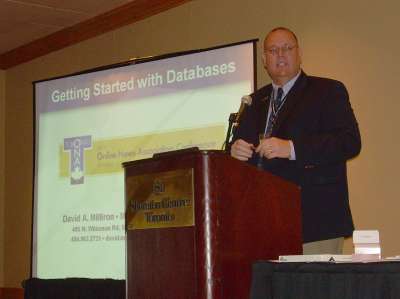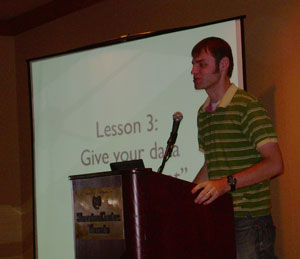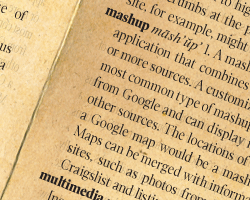 Live from the ONA conference in Toronto…
Live from the ONA conference in Toronto…
This shall be the year of the “data center.”
Gannett’s online data initiative has hit it big with online news industry types who are now itching to put up databased treats such as school report cards, crimes, property sales, public employee salaries and restaurant inspections.
Easier said than done.
David Milliron, now at Caspio but formerly a data guru at the Atlanta Journal-Constitution, provided some insights on what’s needed to get a news organization started putting up great searchable databases.
Of the many things about which Milliron spoke (getting advertising on board, worrying about server load), the thing that struck me the most was the need for getting educated the right way and having a solid network of other pros to lean on. When the crap hits the fan and your site goes down because of a bad query, it’s essential to have the “under the hood” knowledge of how the database and application work. That means understanding the programming language behind the framework, Milliron said.
Furthermore, having a network of pros –whether its at your shop or otherwise–means you tap those other folks’ wisdom, have them give you great ideas on how to write good, efficient code and have them spot-check your work. For some without a mentor in-house, that may mean finding a local users group or joining a listserv (such as the ones offered by NICAR and other organizations).
Some things Milliron says you need to consider before starting database projects:
-Are there other people in your shop or at other shops in your industry developing with the programming language and framework you’re picking?
-Can you get someone knowledgable to review your code?
-If the person developing your applications gets hit by a train or hired away, will you be able to bring in someone else?
-What are the costs and time associated with maintaining the database, not just what it takes to slap it up.
As Milliron said, it’s a rare thing to find one person who knows how to gather data, analyze it, clean it, draw meaningful conclusions from it, put it up on a server, build a rocking database application and then fix it when the thing blows up. And if you do run across such an individual, they probably already have a startup or work at Google…
Now if you want to get your hands dirty with code, Milliron suggests checking out your local community college or professional development programs for database classes. That comment struck me because yours truly has been going to a local community college since August to learn some honest-to-goodness programming (in C++ of all things). I can tell you that after banging my head against a PHP/MySQL book for weeks and making little progress, having a pro hold my hand through those concepts helped me build a useful PHP app for our web producers in about four hours.
Creating interesting, functional, user-friendly databases is a big undertaking. Just don’t be afraid to get your hands dirty, and don’t fear failure. You will probably write a bad query, crash a server and have some whiz kid rewrite your 70 lines of code into seven.
But if it means gaining the knowledge to build great apps, it’ll all be well worth it in terms of page views for your site, value for your readers and –most poignantly– your job security.
 [UPDATE: A spot check of the WaPo and LA Times shows their PageRank have returned to normal. Oh well, it was fun while it lasted!]
[UPDATE: A spot check of the WaPo and LA Times shows their PageRank have returned to normal. Oh well, it was fun while it lasted!]
 The New York Times
The New York Times  Live from the ONA conference in Toronto…
Live from the ONA conference in Toronto… Live from the ONA conference in Toronto…
Live from the ONA conference in Toronto… Live from the ONA conference in Toronto…
Live from the ONA conference in Toronto… Is the concept of a “mashup” turning your brain to mush? Does the idea of “crowdsourcing” leave you feeling … lonely?
Is the concept of a “mashup” turning your brain to mush? Does the idea of “crowdsourcing” leave you feeling … lonely? A coalition of small, niche community publications can become a premier source of news in Minnesota, says Jeremy Iggers, director of of the Twin Cities Media Alliance at
A coalition of small, niche community publications can become a premier source of news in Minnesota, says Jeremy Iggers, director of of the Twin Cities Media Alliance at  If you’re big into CSS, Flash or just design in general, then mosey on over to
If you’re big into CSS, Flash or just design in general, then mosey on over to  Sitepoint.com is offering its 439-page book, “Build Your Own Ruby on Rails Web Applications,” for free as a downloadable PDF on its Web site. I got mine, and it’s fantastic (especially at the low price of $0)!
Sitepoint.com is offering its 439-page book, “Build Your Own Ruby on Rails Web Applications,” for free as a downloadable PDF on its Web site. I got mine, and it’s fantastic (especially at the low price of $0)!